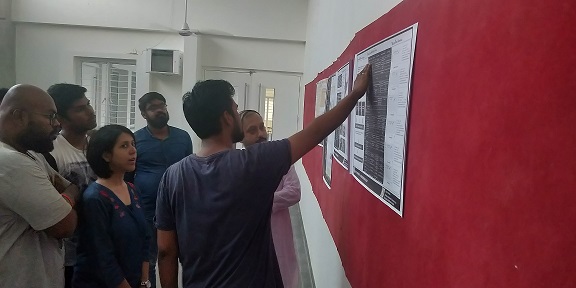Description:
This module allowed the students to develop an understanding of a slum which is solely based on their own perceptions of the slum but guided by an intention to assess vulnerability. This module sets the baseline of information that would be relevant to assess a slum and identifies the indicators which are local and need based.
There were two lectures in this sub-module. First one introduces the concept of Brown Agenda environmental problems as often seen in developing countries, in particular context of slums of India. The nature of these problems, the symptoms associated, the established ways to measure, the benchmarks and associated research were introduced. The second lecture introduced the concept of entitlements and vulnerability. Awareness of the fact that vulnerability is a multi dimensional aspect with social economic and physical dimensions was raised. The lecture also introduced ways to interview and discuss with slums dwellers.
Students were formed into 3 groups of 5-6 members each and they visited 3 slums of their choice in Vijayawada. Based on their reconnaisance and discussions, students developed a set of indicators and paramaters (under each indicator), which needs to be analysed to have an understanding of the character of the slum.
This is an essential module as it teaches the students abilities to do site visits and evolve measurable analytical parameters out the visits. In essence, the characterisation of the informal settlement is done in a manner that is grassroots based, bottom up, contextual and yet quantifiable.
Duration:
This sub-module was carried out over 2 weeks.
Deliverable:
a) Students developed a detailed list of parameters under the heads of social, economic and physical aspects of vulnerability.
b) They developed an understanding of how to normalise, measure and quantify each parameter.
Suggested Readings for the Sub Module 1:
a) Baken R. (2008): ‘The political and administrative context of slum improvement: two contrasting Indian cases’. Published in Proceedings of: IRC Symposium: Sanitation for the urban poor - Partnerships and Governance. Held in Delft, The Netherlands, 19-21 November 2008.
b) Cities Alliance Project (2012): A Brief Report on Security of Tenure for Slums. Community-Led Sangli Toilet Construction Activity. Output Report. CAP Publications. New York.
c) Agarwal, S & Taneja, S (2005): ‘All slums are not equal: child health conditions among the urban poor’. In: Indian Pediatrics. Vol 42, Issue 3, pp. 233-244


